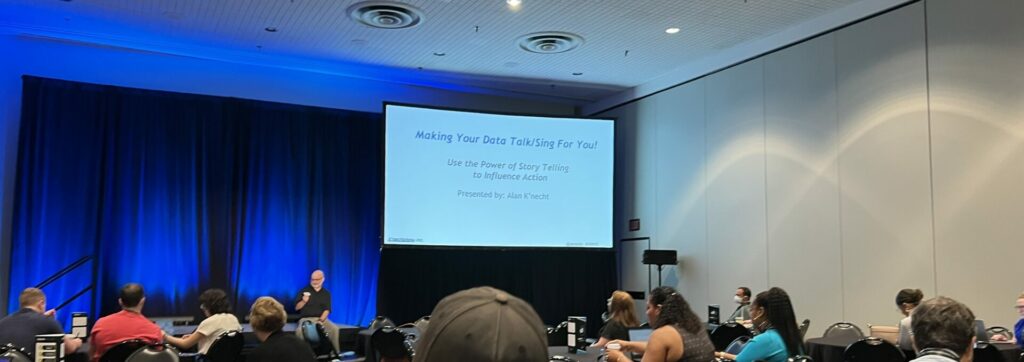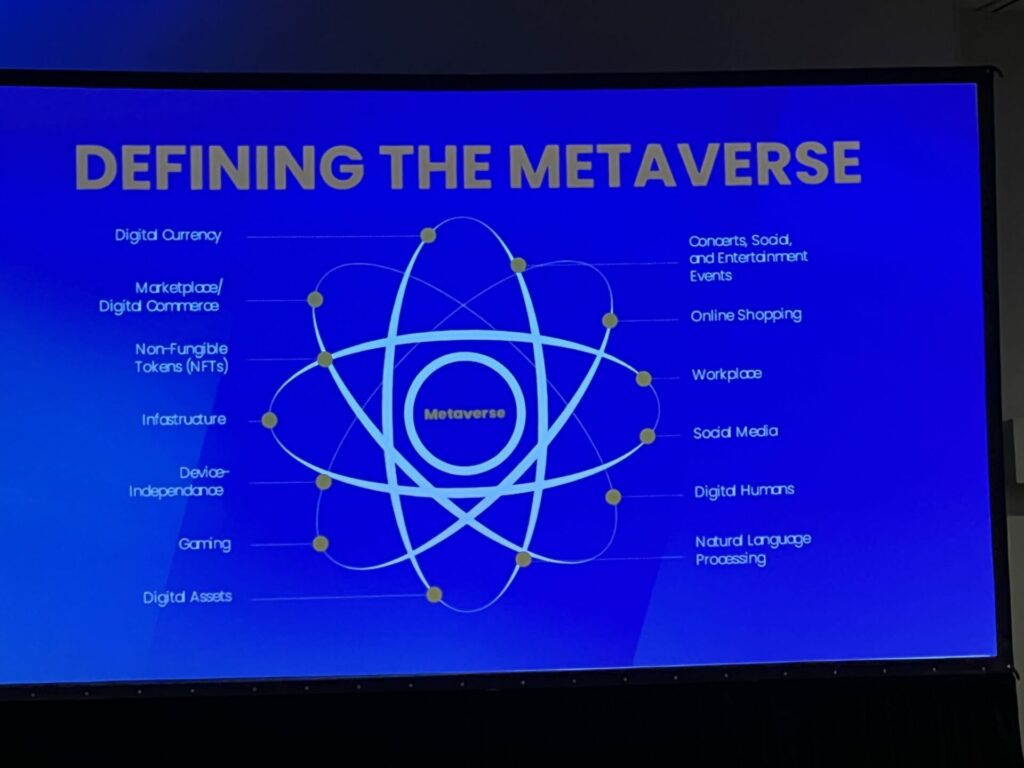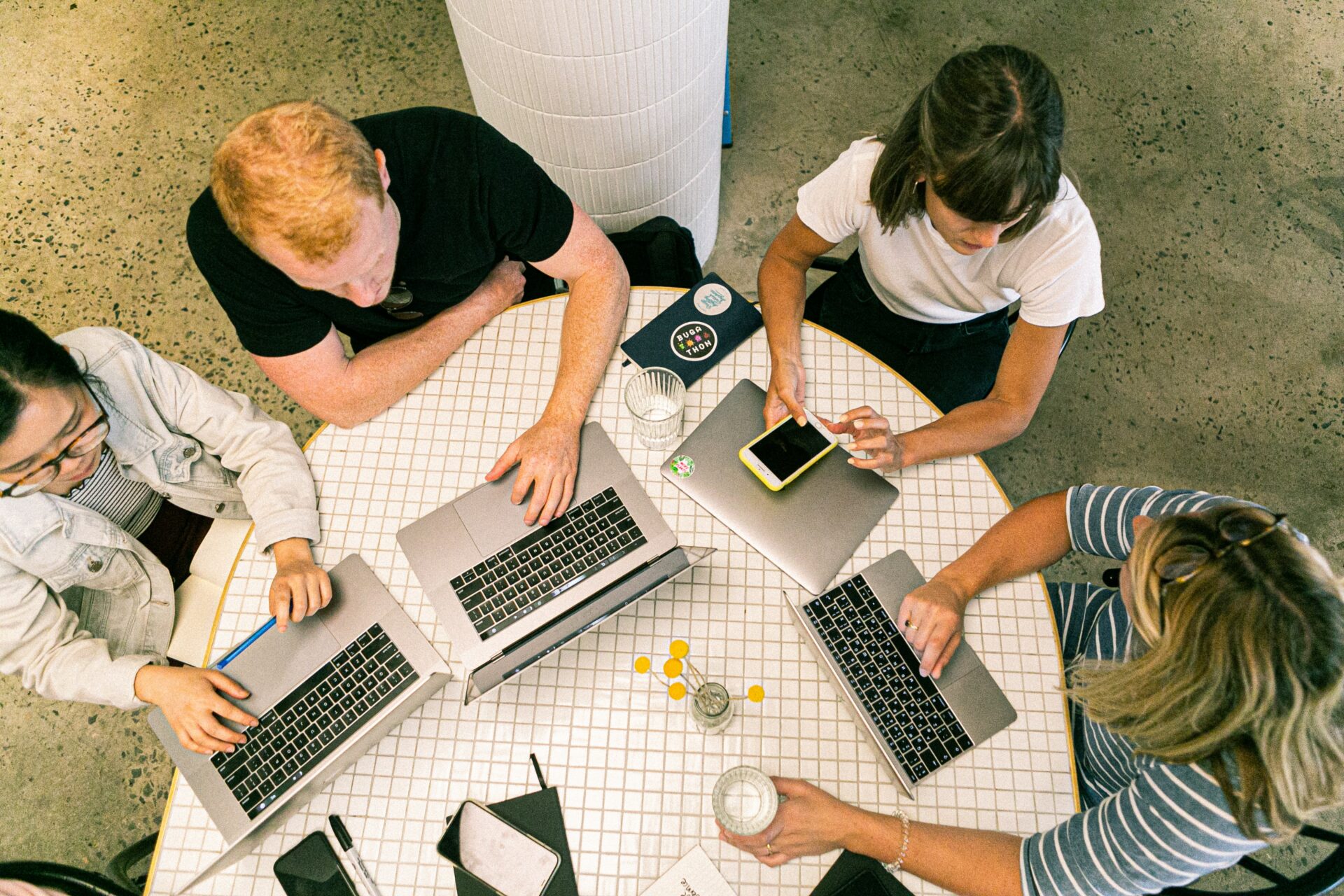Last week, I did something I haven’t had the chance to do in years… I attended a conference… IRL (in real life)!
The conference in question? The Digital Summit NYC 2022 (DSNYC); a two day event of keynotes, masterclasses and breakout sessions led by industry thought leaders and attended by digital marketing professionals from across the client, agency, and vendor landscape.
Having the opportunity to get back out and meet, hear from, and network with other industry folk after what seems like an age of social distancing and ‘zoom conferences’ was both incredibly energizing and exhausting in equal measure. I’d forgotten how demanding it is, being ‘on’ for back to back days, constantly trying to take in all the information and ideas that are being shared, let alone process what it all means. That being said, I came away with a head full of inspiration and, having had a minute to ‘defrag’ what I heard, a short list of key takeaways to share:
3. Be more judicious in your marketing
Don’t have time to read the whole article? Click above to skip to the takeaway that piques your interest most. If you do got the time, then read on, my friend…
Before diving into my key takeaways, I want to take the opportunity to thank all the speakers and organizers of Digital Summit NYC. A lot of work clearly goes into putting together an event like this and to pull it off seamlessly in our current climate deserves celebration. 👏👏👏
So let’s look at what I learned. The first unofficial learning from DSNYC, like many other events, is that while the individual sessions are very informative and educational, often the most insightful learnings come from the themes that emerge across all the sessions. To that end, here are the key 5 themes I heard over the two days:
Theme 1. Data data data
You’d have got very short odds betting on data being the most talked about topic going into a two day digital conference. So it was no surprise then that, of course, nearly every session at least mentioned, if not focused the majority of their time on the importance of data. To say it underpins everything in the digital space so ignore it at your peril, is nothing revelatory, but what was interesting was the number of ways it was referenced, utilized and the range to which different speakers held it in regard. From those who evangelized its powers in any of the “how to build a data backed [insert marketing discipline here] campaign” talks to the more skeptical “question everything” pragmatists and even the “your data is worthless” mavericks, it seemed there were no shortage of hot takes and POVs on how (or indeed, if) we should all be leveraging data in our marketing.
From my own POV it is clear that data is both the currency and fuel of connection between your brand and your consumers. But in occupying such an integral role to what we do as marketeers, it’s important we handle it with care and respect. To paraphrase Alan K’necht who spoke on day 2; “data doesn’t lie. But the people wielding it can use it to tell whatever story they want”.

Theme 2. Optimization
If ‘data’ was odds-on favorite to be the most talked about topic at the conference, performance measurement and optimization would have been a close second. Many of our speakers dedicated significant portions of their talks to discuss how and when best to apply testing and analysis to digital marketing strategies. Similar to ‘data’ when it comes to testing, here too there was a wide range of opinions about how frequently to test and optimize; some say test everything all the time. Others asserted subject line tests, for example, are a waste of time. The reigning consensus however, was that it really depends on what’s right for your business. And to that point, the notion of industry ‘best practice’ and ‘benchmarks’ ought to be taken with not just a grain, but a handful of salt. Something I’ve often found myself saying to clients and colleagues in private so it’s refreshing to hear others such as Jen Capstraw say it out loud.
As for the assertions about testing frequency, I tend to lean more toward the ‘test as often as possible’ school of thought. That being said however, these tests must be grounded in proving and or enhancing your strategy. Don’t test it for the sake of it and definitely don’t over complicate tests by trying to test too much. But we should always be seeking to learn something with every deployment.
And when it comes to benchmarks, industry stats are a useful context but nothing is ever apples to apples so use your own past results as a true indicator of how you’re evolving your performance.
Theme 3. Be more judicious in your marketing
How many times have you sat in a workshop and reached the end with a long list of ideas to implement across your business and thought “great, so where do I start? No, seriously, WHERE do I start!?”? Couple that with a quick internet search or even attend a ‘digital marketing’ conference and you’ll find no shortage of content offering “5 things you must do now for a killer email strategy”. Well, it seems several of the speakers at the DSNYC have felt your pain. Driven by past trauma of decision paralysis, the most common ‘framework’ shared over the two days seemed to be some form of ROI matrix. The principle is simple; plot all your ideas against a quadrant with X being effort/time/cost or other investment metric vs Y being level of impact to the business. The objective then is to find the projects, ideas and strategies that yield the biggest positive impact for the most efficient investment.

Again, the framework itself is not groundbreaking. Flip through any business school textbook and I’m sure you’ll find a version right there in chapter 1. What is worth noting is that so many felt the need to include it in their allotted 30 minutes. It seems that as the possibilities of our industry grow (new channels; more data; better technology etc.), in the face of an impending recession, CFOs are looking for the most bang for their buck. Therefore it’s imperative that marketers are smart and direct every marketing $ as efficiently as possible.
Theme 4. Post pandemic connection
We’ve all been stuck indoors and online for the last 2+ years and now we’re emerging misty eye’d into the real world trying to remember how to interact with one another IRL again (Heck, my opening gambit of this article was how strange it was to be back in an overly aggressive air conditioned conference center again, instead of watching a live stream from my couch). And brands are in the same boat… they’ve invested a lot of time, effort and $s to adapt to our evolved digital lifestyles so now they’re trying to figure out which of those behaviors will ‘stick’ and which of our previous consumer behavior will return.
… But hold on a minute, here comes the metaverse! Are we all destined to start plugging into a new digital world, just as soon as we’ve been let back out into the real one? Maybe.
“Can we all just calm down with the metaverse”
David Shing. DSNYC ‘22
As irreverent as ‘Shingy’s’ remark was, it’s interesting to see how many people either were or weren’t talking about web 3.0 at the event. On one hand, for a digital summit, it felt like there was relatively little air time given to ‘the next stage’ of the environment we (digital marketers) all make a living in. Particularly when more and more brands are beginning to dip their toes into the world of NFTs, digital currency, digital marketplaces etc. On the other hand, it makes sense in light of the previous ‘judicious marketing spend’ trend mentioned above. For many, the current lack of clear definition of the metaverse may be a barrier for marketeers who seek to focus efforts on what they can affect right now. As Bill Forelli insightfully put it, “doing something in the metaverse right now is good if you want to get written about in Campaign Magazine. But you’re not exactly doing it to drive immediate sales. There’s just not enough people there yet”.

For me, the conversation we should all be having, is how can brands create a much more augmented experience for their consumers. Understanding that it’s not an either or option. People will choose to engage with your brand in the platforms, channels, and environments that suit them best at that moment. Which leads nicely into my final theme…
Theme 5. Be more human
Ok, so we’ve been hearing for a loooooong time now, it’s all about ‘authenticity’ and your consumers expect your brand to talk and behave like a human, which if I’m honest feels like something of a platitude to say at this point. Yet, at this year’s DSNYC, it seemed like a lot of people were still saying it. Why?
Well, when we think about this advice in the context of the other trends it begins to sound more insightful. The digital marketing landscape continues to evolve at a pace. Powered by more and more data, combined with increasingly sophisticated technology, marketeers have more opportunities to reach consumers with their message than ever before. But more doesn’t necessarily equate to better. Collect too much data, over automate and over optimize your campaigns and you’ll start to sound at worst, creepy. At best robotic. Constantly shout at people in every channel, digital or real world, and they’re going to get fed up with you pretty quickly. Try and be a brand for ‘everyone’ and you’ll end up never really being for ‘anyone’.
So what does it mean for a brand to be more human in 2022? I think, yes, Cari Twitchell is right, we should be thinking about what type of person our brand would be. How would we talk? How would we behave? What are the issues we care about? That is our human brand identity. But let’s go even further and think about one of the most human traits of all; empathy. How can we as marketers use the tools at our disposal combined with emotional intelligence to understand and respond to the human on the other end of the ‘conversation’. Where are they at that moment? What else is going on in their lives right now? What do they want / need from our brand? Then, and only then, can we say build genuine human connections in whatever channel the people we’re trying to reach, chose.
So there you have it, my top takeaways from the first IRL conference I’ve been to since before the pandemic. If you’d like to talk about how you and your brand can create more Impactful Human Connections with your consumers both online and IRL, get in touch.



